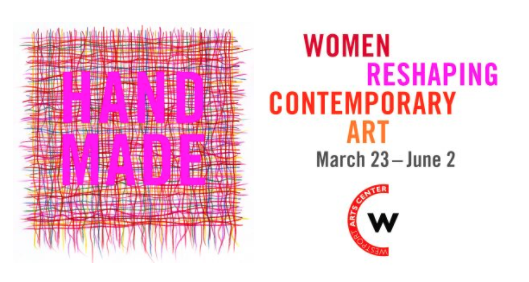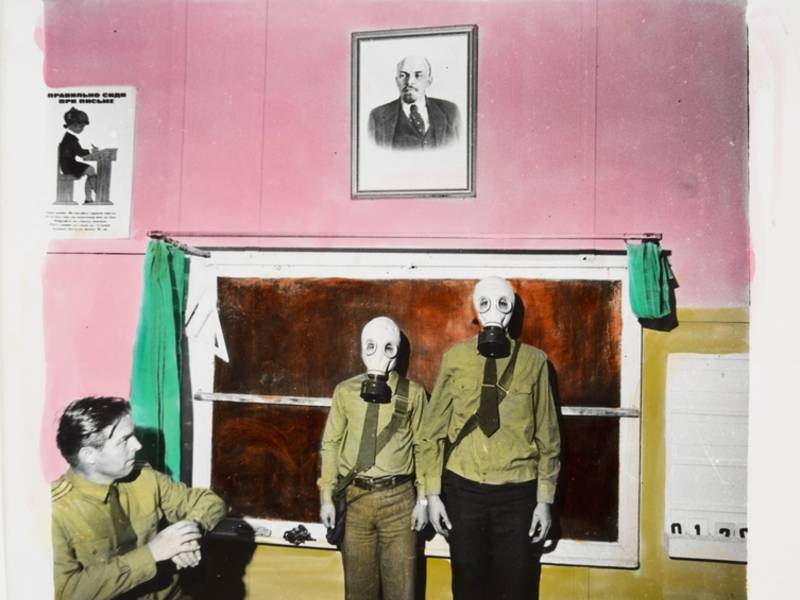In planning your trip to browngrotta arts in Wilton, Connecticut for Blue/Green: color, code, context between April 28th and May 6th take some time out of your schedule to visit a few other exhibitions going on in the area.
A short 15-minute drive from browngrotta arts, the Westport Arts Center’s current exhibition HandMade: Women Reshaping Contemporary Art features a diverse array of work from 15 leading female fiber and textile artists, including Ghada Amer, Anna Betbeze, Ligia Bouton, Orly Cogan, Lesley Dill, Terri Friedman, Sermin Kardestuncer, Sophia Narrett, Faith Ringgold, Miriam Schapiro, Judith Scott, Beverly Semmes, Rosemarie Trockel and Margo Wolowiec. The exhibition also features work by three browngrotta arts artists, Chiyoko Tanaka, Carolina Yrarrázaval and Norma Minkowitz. Curated by Elizabeth Gorayeb, the Executive Director of the Wildenstein Plattner Institute, Inc—a New York-based non-profit committed to art historical research—the exhibition examines the role of women in reshaping what has historically been considered “fine art.” Additionally, the exhibition demonstrates how fiber and textile materials allow artists such as Faith Ringgold and Sophia Narre to examine topics such as race, gender and sexuality. HandMade: Women Reshaping Contemporary Art will be on view at the Westport Arts Center through June 2nd. For more information visit the Westport Arts Center website HERE.

Ala Ebtekar’s Zenith V at Long, Winding Journeys: Contemporary Art and the Islamic Tradition. Photo: Katonah Museum of Art
Next stop, the Katonah Museum of Art’s exhibition Long, Winding Journeys: Contemporary Art and Islamic Tradition. The exhibition looks at a group of artists of Middle Eastern and South Asian descent whose work engages the diverse forms of Islamic visual tradition to explore religion, culture and socio-political issues today. The title of the exhibition “Long, Winding Journeys: Contemporary Art and the Islamic Tradition” was inspired by Pulitzer Prize-winning playwright Ayad Akhtar’s essay The Breath of Miraj. Akhtar’s The Breath of Miraj conveys the manner in which Islam and its history can inspire creative life to become a “long, winding journey.” While making the pieces included in the exhibition, artists utilized some of the century-old forms that define Islamic art, such as calligraphy, miniature painting, geometric patterning, textiles and architecture. Long, Winding Journeys: Contemporary Art and Islamic Tradition will be available for viewing until June 17th, for more information on the exhibition visit the Katonah Museum of Art’s website HERE.
Hot Art in a Cold War: Intersections of Art and Science in the Soviet Era will be on view until May 20th at the Bruce Museum in Greenwich, Connecticut. The provocative exhibition probes into the consequences of innovation in science, technology, mathematics, communications and design during the Cold War. The exhibition juxtaposes the art made during the Cold War in opposition to state-sanctioned Socialist Realism with artifacts from the nuclear and space programs to explore the triumphs and tragedies unleashed by humankind as it gained the power to both leave the Earth and to destroy it. Produced from the 1960s to the 1980s, the items on view in Hot Art in a Cold War address themes of international supremacy and hegemonic power during a turbulent period marked by the ever-escalating competition for nuclear supremacy and the space race. “The Bruce Museum prides itself in being a museum of both art and science and in finding the interconnections between the two,” states Dr. Daniel Ksepka, Bruce Museum Curator of Science and co-curator of Hot Art in a Cold War. The exhibition allows visitors to “see how the triumphs of the space program and anxieties about nuclear arms were captured by period artists. Likewise, many of the scientific objects are works of art in their own right. The elegance of Sputnik, for example, is as striking and undeniable as its impact on the space race.” For more information on Hot Art in a Cold War: Intersections of Art and Science in the Soviet Era visit the Bruce Museums website HERE.
Last but not least, the Wilton Historical Society’s new permanent exhibition Connecticut History, Wilton’s Story is now available for viewing. Through artifacts and objects, the Wilton Historical Society aims to shine a light on Wilton’s roots and connections, as well as the evolution of the town since the colonial period. For more information on Connecticut History, Wilton’s Story visit their website HERE or call the Wilton Historical Society at 203-762-7257.



